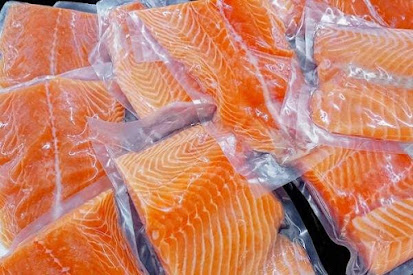Fresh Seafood Packaging Market: Innovations and Trends Shaping the Industry
The global fresh seafood packaging market plays a vital role in preserving the quality and freshness of seafood products from the time they are harvested until they reach consumers' plates. With the increasing demand for fresh seafood, both domestically and internationally, effective packaging solutions have become indispensable for the seafood industry. This article explores the dynamics, trends, and key factors driving the Fresh Seafood Packaging Market, a critical component of the broader food packaging industry.
Market Overview
The Fresh Seafood Packaging Market is a subsegment of the broader food packaging industry, primarily dedicated to preserving the quality and extending the shelf life of various seafood products, including fish, shellfish, and crustaceans. This market has gained significant prominence in recent years due to the growing consumer preference for fresh and healthy seafood options.
Market Drivers
Several factors are driving the growth of the Fresh Seafood Packaging Market:
a. Increasing Demand for Seafood: The rising awareness of the health benefits associated with seafood consumption has led to an increased demand for fresh seafood products. As consumers seek high-quality, fresh, and safe seafood, packaging solutions play a crucial role in meeting these expectations.
b. Globalization of Seafood Trade: The globalization of the seafood industry has led to an increase in international trade. This requires advanced packaging solutions to ensure that seafood products remain fresh during transit, contributing to the expansion of the packaging market.
c. Sustainable Packaging: Environmental concerns have prompted the development of eco-friendly packaging solutions. Sustainable packaging options, such as biodegradable and recyclable materials, are gaining traction in the seafood packaging industry.
d. Regulatory Compliance: Stringent food safety regulations and labeling requirements, such as the FDA's Hazard Analysis and Critical Control Points (HACCP) and the EU's regulations, are driving the demand for packaging that ensures compliance with these standards.
Packaging Types
The Fresh Seafood Packaging Market offers various packaging options to cater to the specific needs of different seafood products:
a. Modified Atmosphere Packaging (MAP): MAP involves altering the atmosphere inside the packaging to extend the shelf life of seafood products. It typically consists of a combination of gases like nitrogen, oxygen, and carbon dioxide.
b. Vacuum Packaging: Vacuum packaging removes air from the packaging, creating a vacuum-sealed environment that prevents the growth of spoilage microorganisms and helps maintain the seafood's freshness.
c. Biodegradable Packaging: With growing environmental concerns, the seafood industry is increasingly adopting biodegradable packaging materials to reduce plastic waste and minimize its ecological footprint.
d. Flexible Packaging: Flexible packaging options like pouches, bags, and films are gaining popularity for their cost-effectiveness and convenience in seafood packaging.
e. Rigid Packaging: Rigid packaging, such as plastic trays and containers, is commonly used for seafood products, providing protection and visibility.
Market Challenges
While the Fresh Seafood Packaging Market offers significant opportunities, it also faces several challenges:
a. Cost Constraints: Implementing advanced packaging solutions can be costly, which may pose challenges for smaller seafood businesses.
b. Transportation Issues: Maintaining the cold chain during transportation is critical for seafood freshness. Any disruptions can lead to spoilage and economic losses.
c. Environmental Concerns: Balancing the need for effective packaging with environmental sustainability is a constant challenge. Finding eco-friendly materials that meet all packaging requirements can be difficult.
d. Regulatory Compliance: Keeping up with evolving food safety regulations and labeling requirements can be complex and costly for seafood packaging companies.
Future Outlook
The Fresh Seafood Packaging Market demand is poised for continued growth as consumer demand for high-quality, fresh seafood products remains strong. Advancements in packaging technology, such as active and intelligent packaging, will further enhance the industry's ability to meet these demands while addressing environmental concerns.
Conclusion
The Fresh Seafood Packaging Market is an integral part of the seafood industry, ensuring that seafood products reach consumers in a fresh and safe condition. With the ever-growing demand for fresh seafood and increasing awareness of sustainability, this market is expected to continue evolving, offering innovative packaging solutions that meet both consumer expectations and regulatory requirements. As the industry strives to balance these demands, it will play a pivotal role in shaping the future of the seafood packaging landscape.


.png)

Comments
Post a Comment